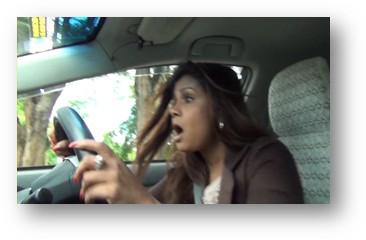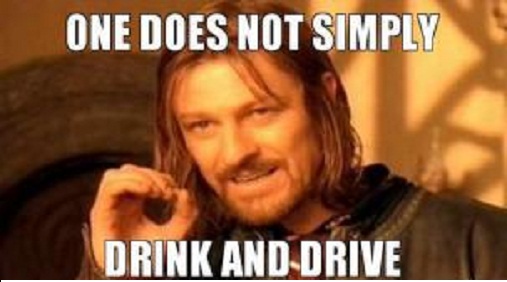Hi, the blog post you are looking for has moved. You can find it here
safe driving
Hands Free is not Risk Free
Question: Do you use a mobile phone or hands free headset while driving?
Be honest.
Stunning news
A new study sponsored by the American Automobile Association (AAA) found that drivers who use voice activated and hands free features to send texts, make phone calls, change radio stations or post on social media had a slower reaction time and higher level of distraction than those drivers who did not. This is a massive blow as it confirms what most people think: hands free is not risk free.
The mind can’t multitask
Although voice activated systems and hands free devices were designed to allow drivers to keep their hands on the steering wheel and eyes on the road, our brains cant multitask. According to the study, the area of the brain which processes moving images falls by 30% when talking on the phone. This means that drivers are more focused on the phone and a lot less on their surroundings, which can lead to more accidents.

Meanwhile… in Sri Lanka
Lets be honest: we’re at fault too. Whether it is to make a quick phone call home, texting the better half during rush hour, calling the kids so you can pick them up from tuition, ringing ahead to book a takeaway or even taking a picture of some hilarious Tuk Tuk Wisdom to upload onto Facebook. Its illegal and can cost you a major fine, or worse. The point is, just because you have ways to multitask while driving, it doesn’t mean you should.
What do you think?
Do you feel that mobile phones/hands free headsets are a big reason for road accidents? Let us know in the comments!
Disclaimer: The views shared in this blog are based on the macro economic conditions & industry status quo as per the time of publishing.
Source: AAA Foundation for Traffic Safety: Measuring Cognitive Distraction-Part II
Going Drinking? Here are 3 Painfully Easy Steps to get Home Safe
This week is a pretty good week to be Sri Lankan: Two holidays in the same week!! During these holidays, people choose to relax. For all you adults out there, this usually involves going to a friend’s place for a glass of alcohol (sometimes more!). Here are 3 steps to ensure that you have fun, and still get home safe and sound.
If you are throwing a party
Offer non-alcoholic beverages: The best hosts never push their guests to drink. Be a good host and offer non-alcoholic beverages: juice, water, soft drinks. Chances are some of your guests may not seek to over indulge.
Have some food: A well filled stomach slows the rate of alcohol absorption. Make it a point to serve many appetizers (everybody loves chinese rolls) or even a good meal, if your budget allows it.
Keep an eye on your friends: The funny thing about alcohol is, you know when somebody has had too much. If your guests show any signs of being overly tipsy, ensure that you arrange a cab or pair them up with a sober friend. Hiding their keys is a good option if they are a really close friend. After all, you wouldn’t want your friend to get hurt… do you?
If you are going out to drink
Be responsible: You are a consenting adult and should know your limits. By all means, have fun. However, the last thing you want to do is to be that person who drinks too much and is the embarrassment of the party or worse, get involved in a nasty accident.
Choose a designated driver: If you are going out with some friends, decide who will be dropping you off, and ensure your driver doesn’t drink any alcoholic beverages.
Call a cab: If nobody in your group is sober, take another way home. The cab may get delayed on popular holidays, but its better getting home late by 30mins than not getting there at all. Make it a point to have enough money to call a cab/tuk when you are going drinking. It gives you and your loved ones peace of mind knowing that you will be back home alive.
Disclaimer: The views shared in this blog are based on the macro economic conditions & industry status quo as per the time of publishing.
VIDEO: Amila Nadeeshani’s Accident: a Lesson in Viral Videos

The accidentIn my last post, I wrote about how we built trust via social media. Today, I’d like to show our latest Youtube video, which has already had over 17000 views (see below). In case you haven’t heard, Sri Lankan actress/singer/entrepreneur Amila Nadeeshani met with an ‘accident’ two weeks ago. Fortunately, she is covered by HNB Assurance.
Positive engagement: From crash to claim settlement
As an organization known for its positive engagement with its customers, we made this video to illustrate how policyholders of HNB Assurance (represented by Ms. Nadeeshani) can breathe easy after a road accident. Look at our employees in the video: the staff member at the call center, the assessor and the garage mechanic. We make dealing with a road accident- from crash to claim settlement, a hassle free experience.
‘What kind of advertising is this?’
This is NOT conventional advertising. These are new methods used by individuals and organizations to raise brand awareness. Think of videos which have gone viral: Gangam Style by PSY, ‘First Kiss’ by clothing company Wren, the ALS Ice Bucket Challenge, Emma Watson’s UN speech and ‘Happy’ by Pharell Williams, which has led to countless spinoffs such as the one by MAS Linea Aqua. These videos are the future.
So sit back, relax and shake away your Monday blues. This is the first of many videos we are already conjuring. If you like it, do us a favour and leave a comment, or share this among your friends- especially those who would enjoy watching this!
Disclaimer: The views shared in this blog are based on the macro economic conditions & industry status quo as per the time of publishing.
Road Rage in Sri Lanka: Are You at Risk?
Road accidents in Sri Lanka are a daily occurrence, with numerous cases being highlighted in the news. In large cities such as Colombo and Kandy, accidents are far more common due to the large numbers of varied transportation options (three wheelers, trucks, automobiles, buses etc) and due to more narrower, sometimes overcrowded roads.
 The Ministry of Transport estimated the total vehicle population to be at 5million (see above) as of 2013. The most recent case of an accident highlighted in the news (at the time of writing) involves two buses colliding on the Southern expressway.
The Ministry of Transport estimated the total vehicle population to be at 5million (see above) as of 2013. The most recent case of an accident highlighted in the news (at the time of writing) involves two buses colliding on the Southern expressway.
In the HNB Assurance call centre alone, this year we have been at our busiest on Fridays, Saturdays and Mondays, with an average of 60 motor claims per day, an increase from 2013 where the corresponding number was 50. Furthermore, our data reveals that in the last two years an overwhelming majority of these claims (98%) are road accidents, with theft of parts and flooding a distant second.
Attempts have been made to identify the causes of these accidents. Dr. Godakumbura singles out young drivers suggesting that they are more likely to drive faster, use their mobile phones when driving, more likely to drive late at night and are more likely to feel the effects of alcohol than older drivers. He adds that motorcyclists and three wheel drivers are highly involved in road accidents. This view is supported by Dissanayake and the Ministry of Transport. Dissanayake reveals that a large number of motorcyclists travel without using a helmet, which is a leading cause of injury. Fazlulhaq reports that upto 60% of grievous injuries and fatal accidents are caused by a combination of high speed and driver fatigue.
The economic impact of road accidents has been documented by Nithershini, P et al (2012) who report that families suffer heavily as their primary breadwinner (often a male) is badly injured or even killed due to road accidents, and just 14% of these families possess life insurance in order to protect themselves from such tragedies. Wijesiri (2012) reported that road accidents cost Sri Lanka over Rs 9.3billion annually.
Which brings us to you, dear reader. Are you at risk? Take a moment to consider about how you drive; do you exceed the speeding limit? Do you race other cars on the roads and overtake dangerously? Chances are some of you who are reading this article have had first or second hand experience with an automobile accident. We kindly request you, whether motorist or pedestrian, to follow these tips the next time you travel:
- Don’t drive if you are tired. Rest or have someone else drive you.
- Be mindful of your surroundings, all it takes is for someone to make one small mistake which can have a large impact on your life.
- Drive slower. Its better to get there late than not get there at all. If you must be somewhere on time, leave earlier to beat the traffic.
- Do not use your phones while you drive/cross, your attention must on the road at all times.
- Wear your seatbelt. Not only is it the law, but it could save your life in case the unexpected happens.
- Don’t drink and drive. Ever. If you take the wheel under the influence of alcohol you are taking your life, and the life of others into your own, unsteady hands.
- If you haven’t already, look into motor insurance and life insurance to safeguard you and your family against the unexpected.
Do you have any more tips on road safety? Tell us in the comments and subscribe for more road safety tips.
Disclaimer: The views shared in this blog are based on the macro economic conditions & industry status quo as per the time of publishing.
Sources
14 persons injured in Southern Expressway accident, The Nation, 31 August 2014. [Accessed 2nd September 2014].
Dr. Godakumbura, VW, 2013, Accidents are Preventable: Road Accidents, part 1, The Island, 26 June. [Accessed 29th August 2014].
Dissanayake, C, 2014, Road accidents in top gear, The Sunday Times, 27 April. [Accessed 1st September 2014].
Fazlulhaq, N, 2013, Road accidents still No.1 killer with 500 fatalities in 2013, The Sunday Times, 5 May. [Accessed 31st September 2014].
Nithershini, P, Dharmaratne, SD, Nugegoda, DB, Ostbye, T & Lynch, CA, 2012, The economic impact of road traffic injuries on households in Kandy, Sri Lanka, Injury Prevention, vol. 18, no. 1. pp. 33. Available from: Injuryprevention website. [Accessed 30th August 2014].
The Ministry of Transport Sri Lanka, Statistics, Department of Motor Traffic: Vehicle Population.
The Ministry of Transport Sri Lanka, Statistics, National Council for Road Safety: Vehicle Accidents.
Wijesiri, L 2012, The Swedish approach: Adopting a zero target for road accidents, The Sunday Observer, 20 May. [Accessed 2nd September 2014].



